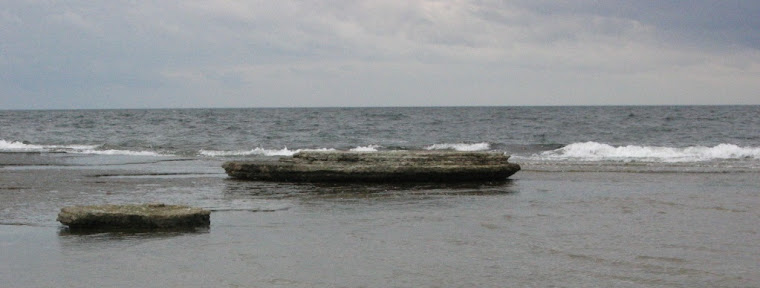I spent another month churning miles under my tires, and in two more weeks, I'll do it again. The first leg of my into-June journey was, of course, arriving at the
American Antiquarian Society (preceded by a quick tour of apartments in the Hershey area so we have a place to sleep when we head east at July's end). And, since no fellowship lasts forever, I had to leave Massachusetts and go into the west (but only for a little while). I spent a long time agonizing about my route back to Casper. Because the trip east at the end of May and the trip east again at the end of July need to be the most efficient versions (the first for available time and the second because my two cats will be miserable enough in the car), I wanted to see something I hadn't seen before, and so I buzzed north into Canada, skirting Georgian Bay and the western edge of Lake Huron. I drove through Whitby, Ontario the morning after James Neal had been traded to Nashville, and I thought about Nealer, and I hope(d) that some day he'll mature into the human being
his hair deserves. If he (and Nashville, mostly because of Pekka Rinne and completely despite Laviolette) do good this season, I'll be happy about it.
Mostly, though, as I drove north by roads slightly less traveled, I thought I should have gotten a map. I wrote down my directions dutifully before I left Massachusetts, as my phone GPS wouldn't help me in Canada, but I only wrote down the distances between turns when they were really tight. As a result, I spent most of my time on ON-12N being certain I'd missed something, but I hadn't, and then I passed Lake Simcoe, which was so beautiful in the late afternoon sunlight, all blue sky and glitter, that I actually swore at it. (With love, Canada, so much love.)
 |
| The title page to William Ailingham's 1703 A Short Account of the Nature and Use of Maps. The red ink is just fantastic. |
In my route through Ontario, I didn't get into any new provinces, which made me sad. My first choice for my route to Worcester was actually to go north through Fargo and Winnipeg and finally have a good reason to drive through Manitoba, but that was before I knew I was going to be moving. That route is about fifty hours of driving, all told, and as much as I wanted to, I couldn't really justify adding at least two more days to my travel time when I'd already been gone for almost six weeks and there was everything to pack. Since last summer and the perfect days on the Gaspé Peninsula, I wanted to see more of Canada, particularly the parts I wouldn't necessarily have other reason to see. Several people told me there was no real point in taking the route I'd taken, that there wasn't much there to see.
 |
| Even the 1714 Calendar of State Papers attests that Gaspé is a draw. |
If you judge from my camera roll, I didn't see anything. I didn't take any photos–I was driving solo and trying to make good time with my persistence since I'm not much for making good time with speed. By most standards, too, I didn't see anything "special"–no particular landmarks, as I remember (save a sign informing me that Orillia is the hometown of Glenn Gould). But I saw lake after lake, pool after pool stretching out on either side of the highway, shadowed here and there by trees. All the way up ON-400, cairns of small stones peppered the roadside cliffs, marking the presence of adventurous and climbsome visitors. I saw a place I wanted to come back to, and the tricks of sunshine and my mosquito-free cockpit probably painted a rosier picture than the reality, but that doesn't particularly matter. New places are always more inviting for their newness, for the greens and golds and granite grays that are never quite like those I left.
 |
| A small ship sketch on a 1688 map of exactly this part of the world, though a bit out of currently known proportions. Never has anything made me want a tattoo more than this map and its small ships. |
During my time at the AAS, I looked at a lot of maps, inked on three-hundred-year-old paper and folded down into tidy, in-volume references that could spring into another level of detail for the accounts they contained, and I looked at one rather large French map, from 1688, that was lovingly hand-detailed, the interior margins of waterways inked a pale blue. Little ships, like the one above, sailed in the little-known parchment seas.
 |
| Marbled end-papers of John Oldmixon's 1708 British Empire in America. |
The history of these maps and books and what they contain, recorded and elided, is more often violent and heartbreaking than not, because those are the wages of colonialism, and wonder is frequently coupled with disgust or fear. It's impossible to forget that. Most of my research saw me elbows-deep in the various ways human beings can be wretched to each other, wittingly and unwittingly, and I spent a lot of time, I think, investing myself in the objects of study as a way to maintain some distance and maybe, maybe, to find some hope. These small sketched ships, the marbled end-papers–these I read like those cairns, small and perhaps unspectacular and not quite secret, but still as invitations to notice, to step a little further in.




